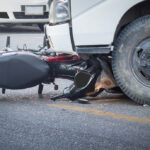
What is Degloving?
It’s fairly gruesome, but unfortunately, degloving is a risky reality for many individuals, especially those who work jobs like construction. A degloving injury is essentially one in which there is an avulsion of skin from an area of the body, like removing a glove, just as the name suggests. The name degloving likely developed because this injury is very common in the hand area, although it can occur to any other body part.
A degloving is a very serious injury, and a bad case of degloving has caused individuals to lose limbs due to extensive damage. Even if the limb can be recovered, it probably won’t return to the way it was before the incident occurred. Those who experience a degloving will likely have to endure multiple surgeries, pricey reconstruction, and will likely experience many painful moments and permanent scarring.
What Causes Degloving Accidents?
Degloving happens mostly to the hand area. Why? Because of ring avulsion. This is when a ring becomes caught or stuck and is quickly and forcefully pulled away from the finger. This excessive force applied can cause the ring to pull the skin, tendons, and muscles away from the structure of the hand.
How does ring avulsion happen?
Ring avulsion incidents typically occur when a person’s ring gets caught on a piece of metal equipment. Although it can happen to anyone in any circumstances, it’s significantly more likely to affect those who work in jobs such as construction or any sort of industrial setting. It may seem like this type of incident isn’t all too common, but all in all, about 150,000 people annually experience a ring avulsion.
Heavy machinery that moves at rapid speeds is a serious danger and a common cause of ring avulsion and degloving accidents. The combination of force, speed, and a person’s hands coming close to such equipment is a treacherous happenstance. This can easily lead to a wedding ring getting caught in the working components of the machine and getting pulled off at high speed.
Industrial settings aren’t the only danger zone for ring avulsion incidents. Motor vehicle accidents are also a fairly common cause of deglovings. Even simply falling and getting your ring caught on an object can present a danger, as a person’s body weight can be enough to cause a ring avulsion accident.
It should also be noted that rings that are ill-fitting pose a heightened risk. A ring that’s too large or loose-fitting has a higher likelihood of catching on an object, surface, or piece of machinery. If you do wear a ring, ensure it is well-fitted and snug in order to reduce the risk of a ring avulsion and degloving from occurring.
Of course, the best way to avoid a degloving or ring avulsion from happening at all is to remove rings prior to engaging in any sort of physical work, heavy lifting, or working with machinery. Any type of activity that involves force, speed, and weight can present a ring avulsion danger, and rings should not be worn. Many employers enforce strict apparel guidelines as established by the Occupational Safety and Health Administration (OSHA), which includes a specific policy regarding the removal of rings and other jewelry that can be a hazard.
There are also numerous companies that now make silicone rings, that can be worn when engaging in physical activities or when at work. These rings will snap if caught or snagged, breaking free and preventing a ring avulsion or degloving incident from occurring.
How Is Degloving Treated?
Degloving is extremely painful and potentially life-changing. Depending on the severity of a degloving incident, a victim may have to learn how to adapt to missing a limb. But beyond the fact that they’re extremely unpleasant to experience, they’re also exorbitantly expensive to treat. In fact, when it comes to degloving, amputation is likely to be less expensive than extensive, ongoing treatments and multiple reconstructive surgeries.
Degloving injuries also pose a very high risk for infection. Often the skin has been completely removed from an area of the body, leaving it exposed and prone to the detriments of dirt and bacteria. If the area does become infected, it can be costly to treat, requiring lots of medication and a long hospital stay. Even if a degloving victim managed to avoid infection, the path to recovery will belong. Many individuals need physical therapy to allow the damaged muscles and tendons to rehabilitate and strengthen again after extensive damage. Plastic surgery is also a high likelihood, as new skin is going to need to be grafted back onto the affected area.
Degloving injuries can take months to heal if complete healing is even possible. On top of extensive medical treatment which is extremely costly, many individuals are rendered unable to work during the recovery period. This is particularly problematic for industrial and construction workers. The nature of such jobs includes the ability to engage in physical activity and use your hands. Therefore, these individuals are likely to be unable to work at all while they recover and so can experience detrimental loss of income on top of struggling with medical bills. Furthermore, if the damage is severe and unfixable, many victims of serious degloving accidents are not able to return to work in the same career field.
What’s more, the effects of a serious degloving accident can extend far beyond exorbitant medical expenses. Many individuals experience extreme emotional and psychological trauma from such an injury and its long-lasting effects, not to mention the psychological effects that permanent job loss can have. This, in turn, can also lead to family issues.
Seeking Compensation Following a Degloving Accident
The combination of extensive surgeries, long hospital visits, reconstruction, rehabilitation, psychological and emotional trauma, and an inability to work makes degloving a very painful and expensive injury. For this reason, those who have undergone such an experience should seek legal counsel in order to receive proper compensation. Those who have undergone a degloving injury or ring avulsion injury should seek proper reparations for their expensive medical bills and any loss of income or ongoing negative effects caused by the accident. This is particularly true for work-related injuries which may have been due to negligence or unmarked dangers in the workplace.
Contact an Experienced Los Angeles Personal Injury Attorney
For anyone who has suffered a degloving injury, it’s important to immediately contact a professional personal injury attorney. The Orange County degloving injury lawyers at the Law Offices of Samer Habbas & Associates can then help determine if you have a valid claim and help you recover the damages you are rightfully owed. With multiple offices located in Irvine, Los Angeles, El Segundo, San Diego, and Riverside, our personal injury lawyers represent accident victims across Southern California. For more information or to schedule a complimentary consultation with one of our attorneys, please call 949-727-9300.
Samer Habbas, Esq
State Bar: #243683
Samer Habbas is a California attorney with over 15 years of experience in personal injury law. Throughout his career, he has successfully recovered over $300 million for his clients, solidifying his reputation as a leading advocate in the field.
Samer swiftly gained recognition for his adept negotiation skills and unwavering dedication to his clients. His practice spans a wide range of personal injury cases, including car accidents, dog bites, funeral home abuse, premises liability, and wrongful death.
Samer is known for his compassionate approach and commitment to securing favorable outcomes for his clients. His expertise has earned him the trust and respect of both his clients and his peers within the legal community. He is also deeply invested in giving back to his community. He actively participates in pro bono work and volunteers his time to various charitable organizations. Samer is a champion for those who have been wronged, leveraging his extensive experience and expertise to make a meaningful difference in the lives of his clients and his community.
Recent Post
-
April 15, 2024
-
April 12, 2024
-
April 9, 2024
-
April 8, 2024
-
April 8, 2024












